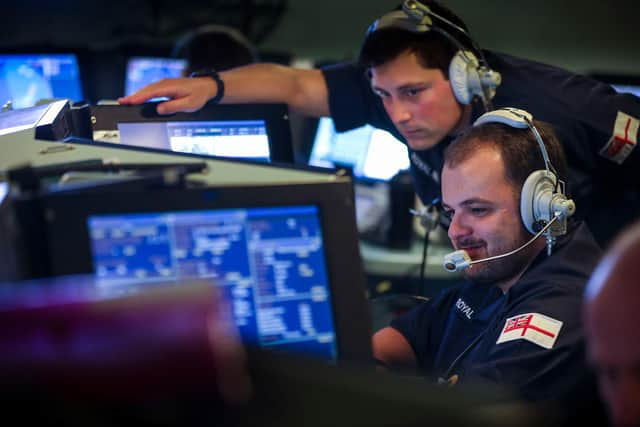Royal Navy ships from Portsmouth use artificial intelligence to defend against missile attack for the first time
This article contains affiliate links. We may earn a small commission on items purchased through this article, but that does not affect our editorial judgement.
and live on Freeview channel 276
Leading-edge software is being tested by two Portsmouth-based warships at sea against live missiles during the largest exercise of its type off the coasts of Scotland and Norway.
Involving more than 3,000 military personnel, Formidable Shield tests the ability of Nato warships to detect, track and defeat incoming missiles, from sea-skimming weapons travelling at twice the speed of sound just above the waterline, to ballistic missiles.


Advertisement
Hide AdAdvertisement
Hide AdThree Royal Navy warships are taking part in the exercise, which runs until early June: destroyer HMS Dragon and two frigates, Lancaster and Argyll.
HMS Lancaster and Dragon, which are based in Portsmouth, are trialing artificial intelligence and machine learning applications which offer a glimpse of the future of air defence at sea.
Experts from the government’s defence laboratory Dstl and industry partners from Roke, CGI and BAE Systems are using the three-week exercise to test their ‘Startle’ and ‘Sycoiea’ systems.
Startle is designed to help ease the load on sailors monitoring the ‘air picture’ in the operations room by providing real-time recommendations and alerts.
Advertisement
Hide AdAdvertisement
Hide AdWhile Sycoiea builds upon this, allowing operations room teams to identify incoming missiles and advise on the best weapon to deal with them more quickly than even the most experienced operator.
Above Water Tactician Leading Seaman Sean Brooks aboard HMS Lancaster is among those who was impressed by the software.
‘I was able identify missile threats more quickly than usual and even outwit the operations room,’ he said.
Although experiments with AI have been conducted before, this is the first time it’s been tested against live missiles, said Lancaster’s weapon engineer officer Lieutenant Commander Adam Leveridge.
Advertisement
Hide AdAdvertisement
Hide Ad‘Observing Startle and Sycoiea augment the human warfighter in real time against a live supersonic missile threat was truly impressive – a glimpse into our highly-autonomous future,’ he added.
Alasdair Gilchrist, programme manager for Dstl said it was ‘imperative’ that Britain continued to invest in the combat systems installed on Royal Navy warships to ensure they meet present and future challenges.
‘Being able to bring get the AI onto the ships is a massive achievement, and while we can prove the AI works in the labs, actually getting Navy personnel hands on is brilliant,’ he said.
Looking for the latest Royal Navy updates from Portsmouth? Join our new Royal Navy news Facebook group to keep up to date.
A message from the Editor, Mark Waldron
You can subscribe here for unlimited access to our online coverage, including Pompey, with 70 per cent fewer adverts for less than 20p a day.
Comment Guidelines
National World encourages reader discussion on our stories. User feedback, insights and back-and-forth exchanges add a rich layer of context to reporting. Please review our Community Guidelines before commenting.
